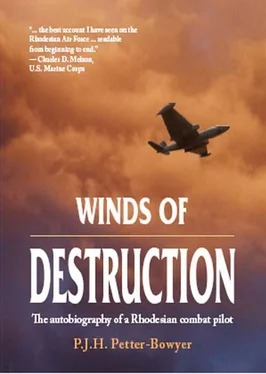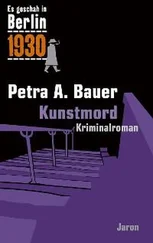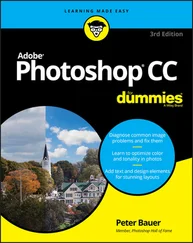Peter Petter-Bowyer - Winds of Destruction
Здесь есть возможность читать онлайн «Peter Petter-Bowyer - Winds of Destruction» весь текст электронной книги совершенно бесплатно (целиком полную версию без сокращений). В некоторых случаях можно слушать аудио, скачать через торрент в формате fb2 и присутствует краткое содержание. Город: Solihull, Pinetown, Год выпуска: 2012, ISBN: 2012, Издательство: Helion & Company, 30° South Publishers, Жанр: Биографии и Мемуары, на английском языке. Описание произведения, (предисловие) а так же отзывы посетителей доступны на портале библиотеки ЛибКат.
- Название:Winds of Destruction
- Автор:
- Издательство:Helion & Company, 30° South Publishers
- Жанр:
- Год:2012
- Город:Solihull, Pinetown
- ISBN:9781908916754
- Рейтинг книги:5 / 5. Голосов: 1
-
Избранное:Добавить в избранное
- Отзывы:
-
Ваша оценка:
- 100
- 1
- 2
- 3
- 4
- 5
Winds of Destruction: краткое содержание, описание и аннотация
Предлагаем к чтению аннотацию, описание, краткое содержание или предисловие (зависит от того, что написал сам автор книги «Winds of Destruction»). Если вы не нашли необходимую информацию о книге — напишите в комментариях, мы постараемся отыскать её.
Winds of Destruction — читать онлайн бесплатно полную книгу (весь текст) целиком
Ниже представлен текст книги, разбитый по страницам. Система сохранения места последней прочитанной страницы, позволяет с удобством читать онлайн бесплатно книгу «Winds of Destruction», без необходимости каждый раз заново искать на чём Вы остановились. Поставьте закладку, и сможете в любой момент перейти на страницу, на которой закончили чтение.
Интервал:
Закладка:
Daytime navigation commenced at the same time as night flying. Now, after many years of flying and having flown with many civilian-trained pilots, I look back and recognise the excellence of Air Force instruction given from day one. Simple matters such as looking over one’s shoulder to ensure a town or other landmark was in the right relative position for one’s heading to next destination may seem obvious, but this insured against misreading the compass or Directional Indicator. Typical and sometimes deadly errors of steering, say, 315 degrees instead of 135 degrees, are thus avoided.
Initially our navigation was conducted on 1:1,000,000-scale maps that, by the nature of their small scale, provide limited topographical information when compared to the abundance of visible features along every flight path. Though this made map-reading for students difficult, it also helped to ensure that maps were read sensibly. Too often man-made features such as roads, railways, bridges, power lines and water storage dams appearing on our maps printed some years earlier were either no longer in use, had altered course or could not be seen at all. There were also many clearly visible landmarks that were not shown at all. So the need to ignore all but God-made natural features was repeatedly drummed into us.
Ever-improving navigational aids, which have become commonplace for present-day pilots, did not exist in Rhodesia in the 1950s. Non-Directional Beacons (NDBs) sited at a few main Airfields were only reliable (when they worked) close to their locations. So reading the ground with one’s Mk1 eyeballs and using map, clock and compass correctly was essential. The ability to identify correctly those riverlines drawn on our maps and interpret ground contouring and high features accurately, particularly at low level, became one of the hallmarks of Rhodesian Air Force pilot proficiency in the years to come.
Night navigation presented different problems, especially when the summer months laid a heavy haze across the country. Dead reckoning and the ability to interpret distances and angles to the lights of towns and mines were of paramount importance. The atmosphere at night with dimly illuminated instruments always thrilled me. Some nights were as dark as a witch’s heart, whereas full moonlight made ground visible at low level. My favourite night-flying condition was when the moon illuminated towering, flashing thunderclouds that sent brilliant lightning strikes to the ground. The dangers one would face in the event of engine failure on any night were deliberately pushed to the back of one’s mind.
General flying continued between night and navigational flights and on occasions solo students were flying every airborne aircraft. Sometimes this was a pretty dangerous situation because, at that time, we had all logged about 140 flying hours.
I cannot recall where I learned that the Royal Air Force consider there are specific danger periods in the average military pilot’s career. These are when overconfidence tends to peak—around 50, 150, 500 and 1,500 hours. We were in the second danger period and the warnings given to us by Squadron Leader Whyte, concerning crew-room bragging and challenges, were all but forgotten. It was Eric Cary who always sought to challenge.
Eric was an outstanding sportsman who revelled in any one-on-one sport such as squash, for which he was then the Rhodesian champion. He also liked to pit his skills against other pilots and it was he who challenged me to meet him at a pre-arranged site in the flying area for a ‘dog fight’ to see which of us could outmanoeuvre the other.
On arrival at the appointed area I was astounded to find all six students gathered in what can only be described as a bloody dangerous situation with everyone chasing everyone else. The greatest potential for mid-air collision probably came from Hoffy who repeatedly climbed above the rest of us then dived straight through the pitching and circling mêlée.
We had not yet started formation flying but coaxed each other into giving it a go anyway. I shudder when looking back at what we did. We had not yet learned that the lead aircraft maintains steady power and that station-holding is the responsibility of those formatting on the leader. During one illegal formation flight, I could not understand why I could not hold a steady position on Bill Galloway who was ‘leading’. Once back on terra firma, Bill said he had been adjusting power to help me stay in position. The result was that I repeatedly overtook or fell back, with wing tips passing, oh so close!
Because there was no senior course to discipline or shove us around one of our instructors, Flying Officer Rex Taylor, had been appointed as Disciplinary Officer. He was a real little Hitler from time to time, but only in working hours. One day he instructed me to have John Barnes report to his office when John returned from flying. Since I would be flying by the time John landed, I wrote a notice for him on our crew-room board. I made the mistake of writing the instructor’s first name with surname instead of rank and surname. Flying Officer Taylor saw this and all hell broke loose. I owned up to the instructor and attempted to draw his wrath on me. He would have none of it, saying we all needed bringing down a peg or two.
It was a hot day and we were ordered to form up in two rows in full flying gear with masks clipped up to our faces. Flying Officer Taylor came to each student in turn and personally pulled the parachute harnesses so tight that we were really bent forward and could not straighten our legs. Then in two files he set us off at the double.
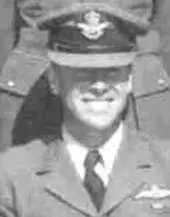
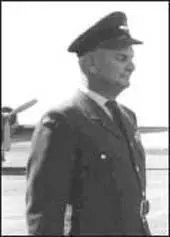
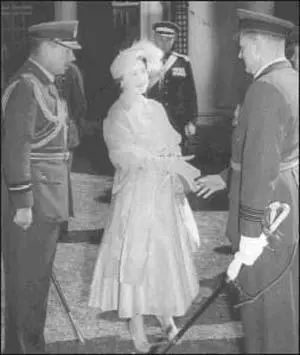
Hard-standings for the jets were still being constructed and a vast area was covered with row upon row of decomposed granite piles waiting to be levelled and compacted. Over these endless mounds we were forced to double. Though falling and sliding on the soft heaps and totally exhausted, we were driven for what seemed a lifetime. Fortunately Flight Lieutenant Edwards arrived on the scene and called a halt to the agony. Most of us reported to SSQ for treatment to raw groins and shoulders.
It was round about this time that the senior course, 9 SSU received their wings from Queen Elizabeth, the Queen Mother, at New Sarum.
When regular formation training started, the BFS phase was drawing to a close. We were all looking forward to our final cross-county flight with night-stop and a party with the townspeople of Gatooma because, immediately it was over, we would then be off on three weeks’ Christmas leave.
A final cross-country with night-stop at one of Rhodesia’s towns was a way to celebrate the completion of BFS and it also brought the Air Force into closer contact with Rhodesian citizens. As with any town in the country, the people of Gatooma went out of their way to give us a great party and treated us to superb food and anything we wished to drink. My course was still mostly teetotal though we did justice to the huge spread of food. The instructors and supporting ground Staff were less interested in the food than joining the local drinking fraternity, for which they suffered the next day on a particularly bumpy ride home in the back of a Dakota.
Читать дальшеИнтервал:
Закладка:
Похожие книги на «Winds of Destruction»
Представляем Вашему вниманию похожие книги на «Winds of Destruction» списком для выбора. Мы отобрали схожую по названию и смыслу литературу в надежде предоставить читателям больше вариантов отыскать новые, интересные, ещё непрочитанные произведения.
Обсуждение, отзывы о книге «Winds of Destruction» и просто собственные мнения читателей. Оставьте ваши комментарии, напишите, что Вы думаете о произведении, его смысле или главных героях. Укажите что конкретно понравилось, а что нет, и почему Вы так считаете.
